Have you noticed white spots on your dishes? Does your skin often feel dry and itchy after a shower? You may have hard water in your home. If that’s the case, you should definitely consider getting a water softener, which begs the question: how do water softeners work?
Hard water contains calcium and magnesium minerals, which can cause scale buildup in your plumbing and lead to many other serious issues down the line.
Luckily, there is a simple and effective solution to combating hard water: a water softener.
If you are considering purchasing a water softener for your home or homestead, or if you are simply curious as to how a water softener works, this guide is perfect for you. Without going into complicated explanations and chemistry, this guide breaks down the basic processes of a water softener into simple steps.
What is a Water Softener?
Overview
A water softener pulls the minerals out of the hard water as the water flows through the system, leaving behind trace amounts of harmless and dissolvable sodium. You may have heard the term “ion exchange” when searching up on water softeners – this is a fancy name for the process in which the hard water minerals are removed. To make it easier, we will refer to this as the water softening process throughout this guide.
Components
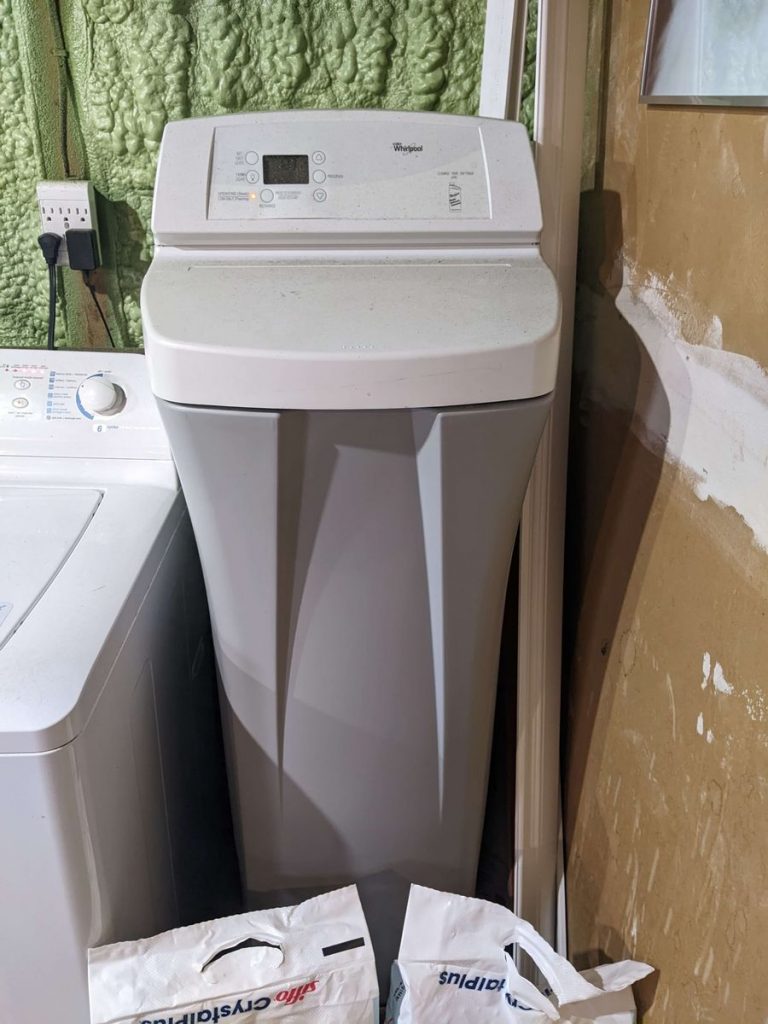
A typical household water softener is made up of three main components:
- A resin tank
- A brine tank
- A control system
The resin tank, also known as the mineral tank or water softener tank, is where the actual water softening process takes place. Your main water line is connected to this tank. The tank is filled with tiny resin beads, which attract the calcium and magnesium ions in the hard water and replace them with harmless sodium ions.
The brine tank holds the water softener salt. In a typical household water softener system, the narrow resin tank sits inside the brine tank. The salt mixes with water at the bottom of the tank to create a brine solution. The brine tank contains a small fill tube to connect the brine tank to the resin tank.
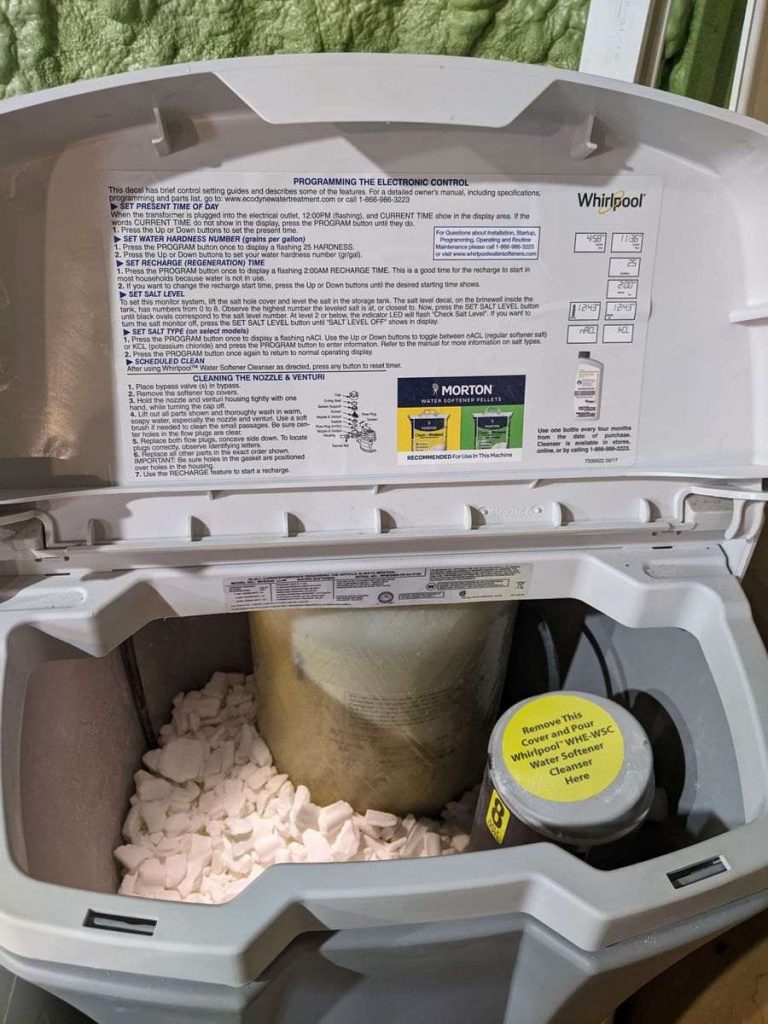
The control system is used for measuring and monitoring the amount of water passing through the resin tank to determine when it is time to flush out the hard water minerals that are stuck to the resin beads. This is where the salt comes into play in a process called regeneration – we will cover that shortly. There are also built-in monitoring devices to indicate when the softener is operating properly and when it is running low on salt.
Our water softener has an orange light that is steady when operating properly and blinks when the softener is low on salt. Just a quick glance is all it takes to know when it needs to be refilled!
How Does a Water Softener Work?
A water softener goes through two main processes: water softening (aka ion exchange) and regeneration.
In the water softening process, hard water reaches the water softener from the main water line of the house. It enters the resin tank, which is filled with tiny beads. These tiny resin beads are negatively charged with a sodium ion.
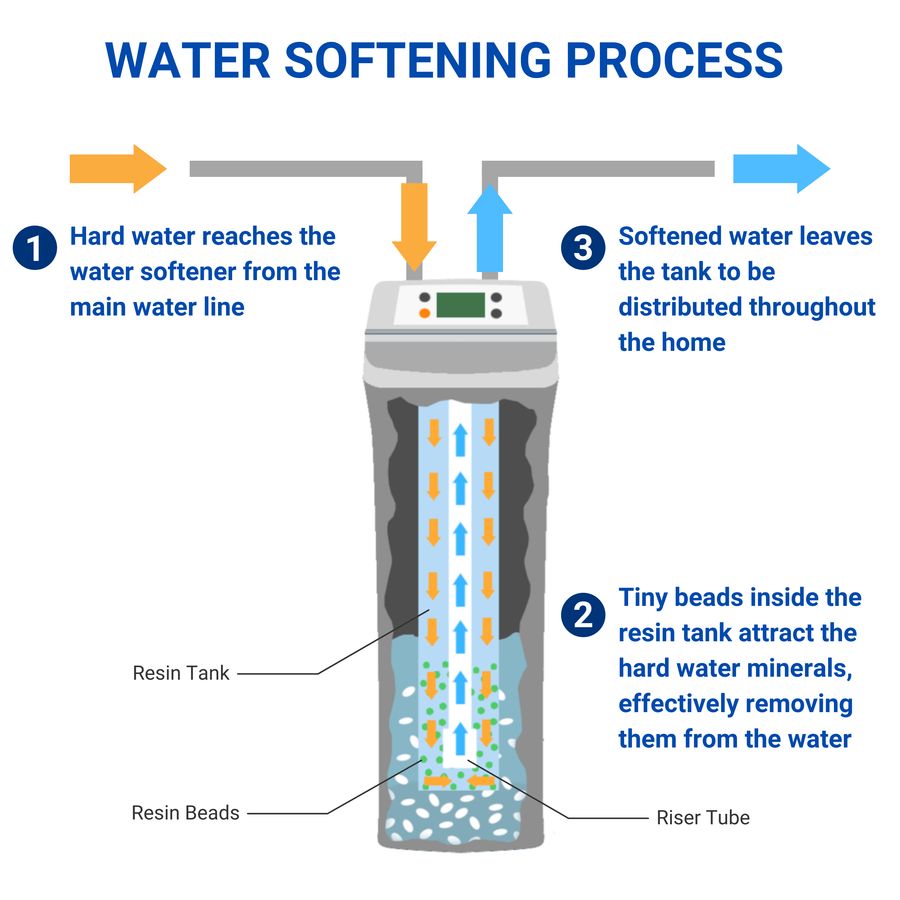
When the positively-charged hard water minerals come into contact with the negatively-charged resin beads, they are attracted to the beads and remain in the resin tank while the water, now replaced with sodium ions, leaves the tank to be distributed throughout your home. Think of the resin beads as little magnets that attract all the hard water minerals and replace them with something harmless and dissolvable.
(Note: This is just a figurative analogy; there is no such thing as a “magnetic water softener” and the concept is based on pseudoscience. If anyone tries to sell you this type of product, run away!)
Eventually, the resin beads get covered in minerals and can no longer hold any more. It is time to wash off the beads and flush all the destructive mineral deposits out of the system forever. The process of flushing out the hard water minerals is called regeneration.
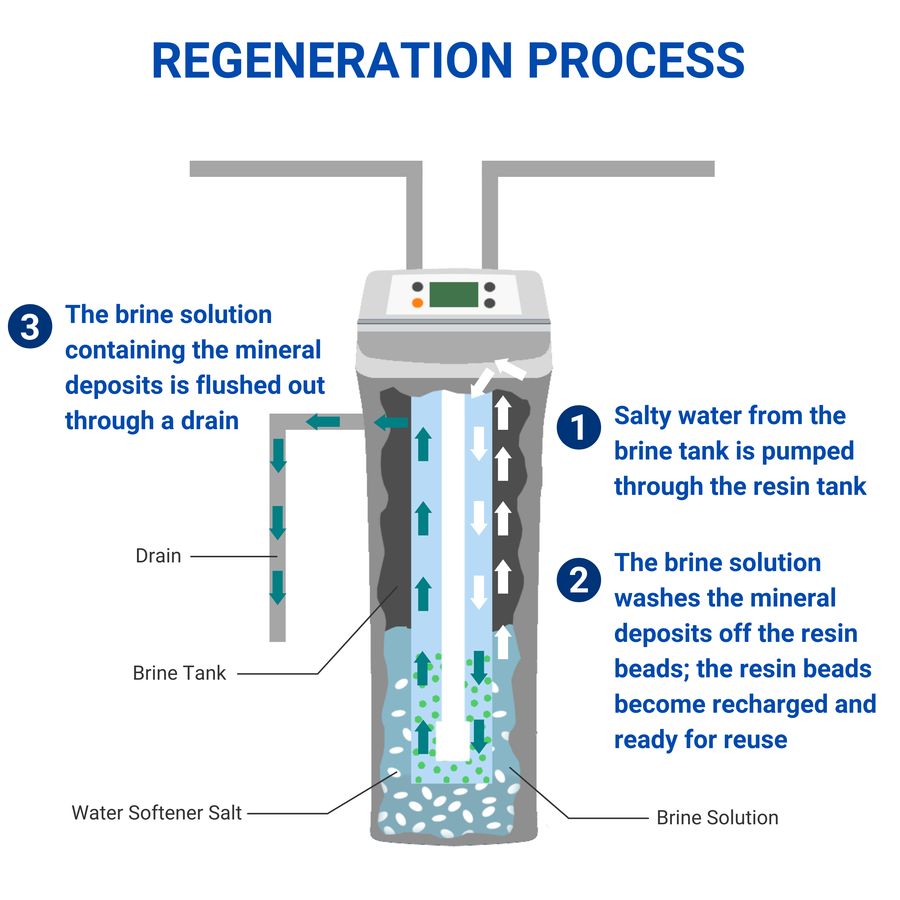
A valve connected to your water softener’s control system allows salty water from the brine tank to flow up the fill tube and into the resin tank. The hard water minerals are rinsed off the resin beads and everything is flushed out into a nearby drain, which is connected to your home’s wastewater system. The tank is then rinsed out with water and the softening process begins again. This all happens automatically.
FAQ
How Much Does a Water Softener System Cost?
Water softener costs can vary, depending on the brand, size and type of softener. Water softeners must also be installed by a professional. If you can’t find a licensed plumber or well water specialist in your area, check with your local home improvement store.
You can expect a typical home water softener system to cost approximately $1500-$2500, including installation.
How Long Does it Take for a Water Softener to Regenerate?
Regeneration takes approximately 1-2 hours to complete. Most water softeners are programmed to regenerate in the middle of the night, usually between 2:00 am – 4:00 am when most people are not using water. If you have recently set up a brand new water softener, we recommend you make sure your softener is set to regenerate around this time to avoid the need to use too much water during this cycle.
Can I Use Water During the Regeneration Process?
Yes. While the system is flushing out mineral deposits, the resin tank is unavailable to the main water line. During this cycle, the main water line bypasses the resin tank and hard water can come into your home. While you still have access to your water during the regeneration cycle, it is best to use only small amounts if you have to, such as for flushing, drinking or washing hands.
How Often do I Need to Replace the Salt?
On average, a family of four may need to refill the brine tank with salt every month or so, depending on how hard your water is. Fortunately, a 50-lb bag of salt is inexpensive and can be found at most home improvement stores. It’s just me and my partner here at our house and we refill the salt every two or three months. If you aren’t sure which salt is best for you, check out our guide to the best water softener salt for sensitive skin.
Conclusion
If you have hard water, it is extremely important to look into getting a water softener. Not sure how to tell if you have hard water in your home? In-home water testing kits are easy, cheap and fast. You can find them on Amazon or at your local home improvement store.
We hope this guide helps you understand the basics of how a water softener works! Let us know in the comments if you have any questions and we will try our best to answer them! Keep in mind that we are not professionals and we do not claim to offer professional advice. We are happy to share what we have learned in our experiences, but we always recommend getting in touch with a plumber or water softener pro!

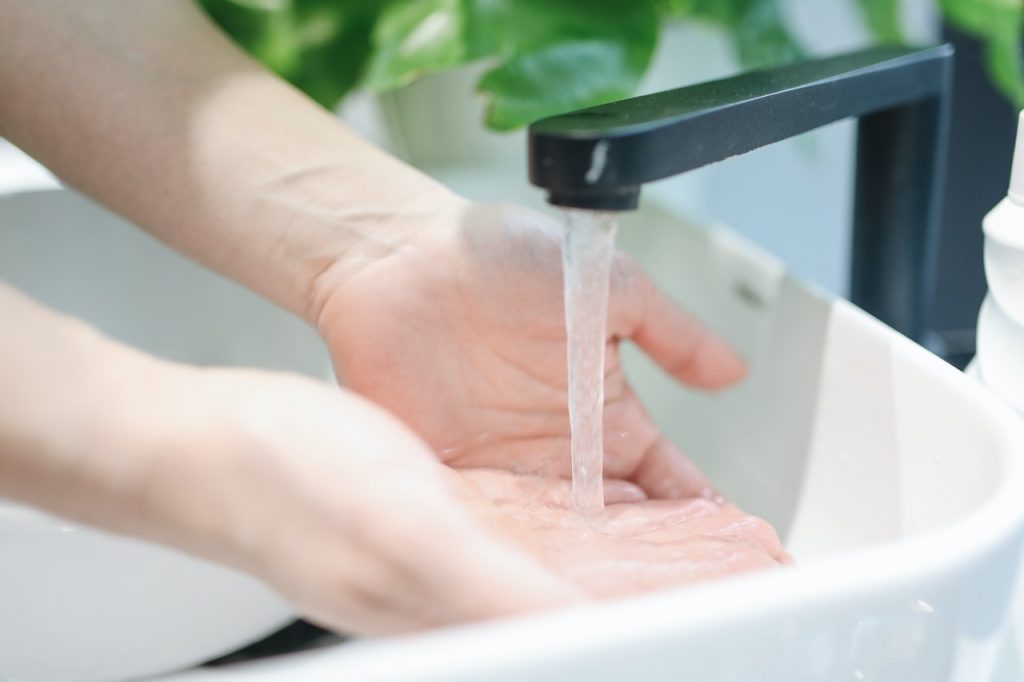
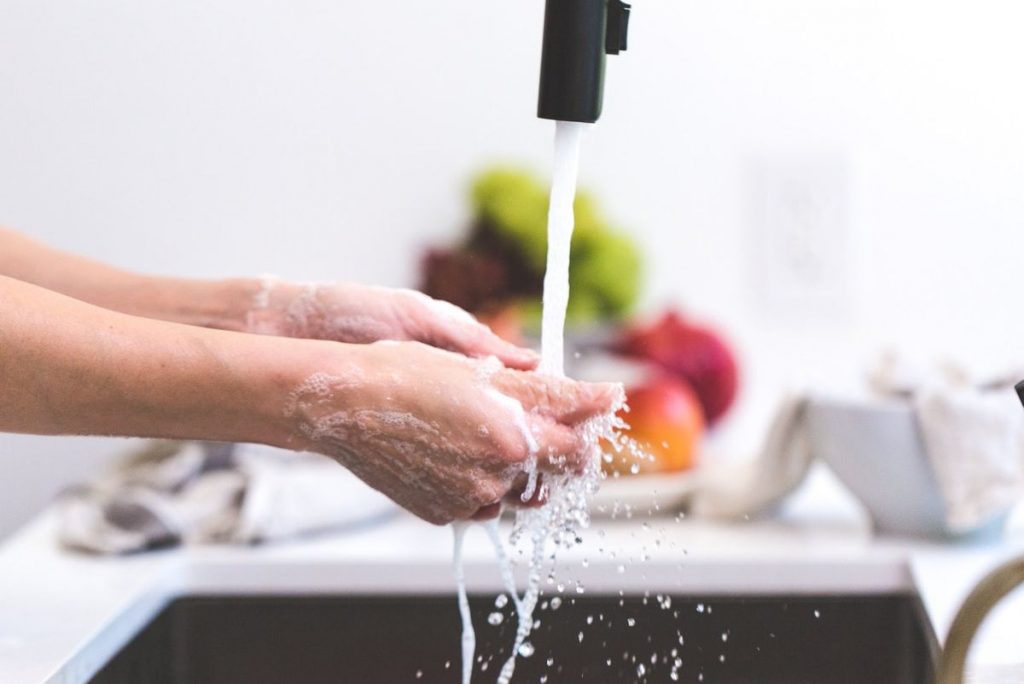


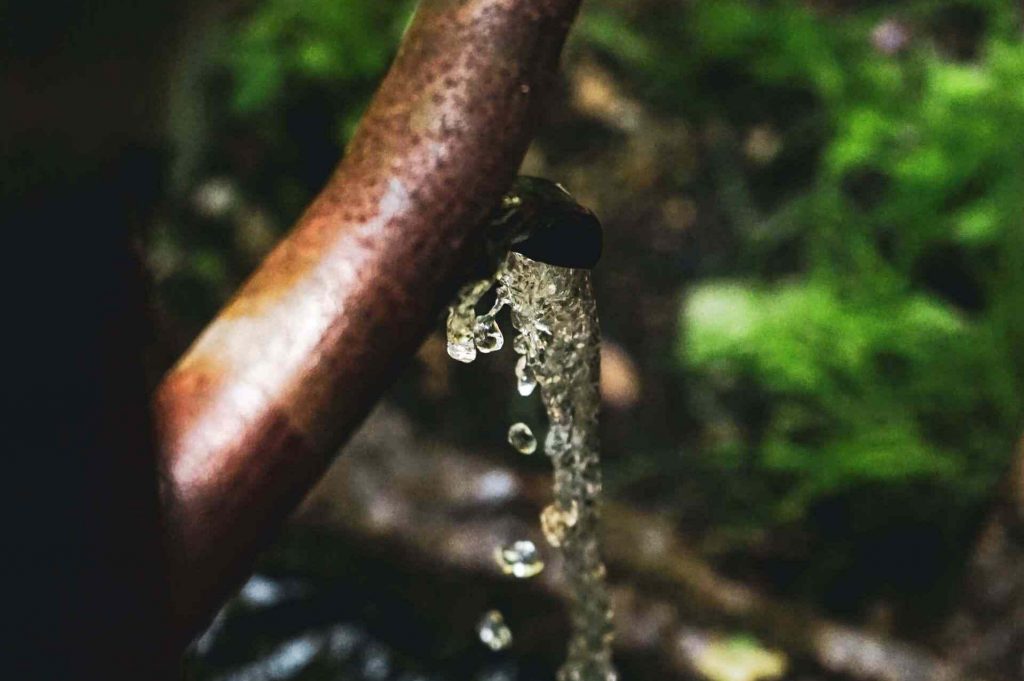
What a great and informative description of what was a piece of enigmatic equipment to me!
Thank you so much and good luck to you and your partner with homesteading! Best wishes!
Thank you so much for such nice feedback! I am so glad to hear that it was helpful for you. All the best to you as well! 🙂